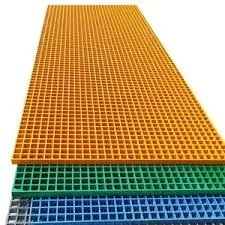
-
 Afrikaans
Afrikaans -
 Albanian
Albanian -
 Amharic
Amharic -
 Arabic
Arabic -
 Armenian
Armenian -
 Azerbaijani
Azerbaijani -
 Basque
Basque -
 Belarusian
Belarusian -
 Bengali
Bengali -
 Bosnian
Bosnian -
 Bulgarian
Bulgarian -
 Catalan
Catalan -
 Cebuano
Cebuano -
 China
China -
 China (Taiwan)
China (Taiwan) -
 Corsican
Corsican -
 Croatian
Croatian -
 Czech
Czech -
 Danish
Danish -
 Dutch
Dutch -
 English
English -
 Esperanto
Esperanto -
 Estonian
Estonian -
 Finnish
Finnish -
 French
French -
 Frisian
Frisian -
 Galician
Galician -
 Georgian
Georgian -
 German
German -
 Greek
Greek -
 Gujarati
Gujarati -
 Haitian Creole
Haitian Creole -
 hausa
hausa -
 hawaiian
hawaiian -
 Hebrew
Hebrew -
 Hindi
Hindi -
 Miao
Miao -
 Hungarian
Hungarian -
 Icelandic
Icelandic -
 igbo
igbo -
 Indonesian
Indonesian -
 irish
irish -
 Italian
Italian -
 Japanese
Japanese -
 Javanese
Javanese -
 Kannada
Kannada -
 kazakh
kazakh -
 Khmer
Khmer -
 Rwandese
Rwandese -
 Korean
Korean -
 Kurdish
Kurdish -
 Kyrgyz
Kyrgyz -
 Lao
Lao -
 Latin
Latin -
 Latvian
Latvian -
 Lithuanian
Lithuanian -
 Luxembourgish
Luxembourgish -
 Macedonian
Macedonian -
 Malgashi
Malgashi -
 Malay
Malay -
 Malayalam
Malayalam -
 Maltese
Maltese -
 Maori
Maori -
 Marathi
Marathi -
 Mongolian
Mongolian -
 Myanmar
Myanmar -
 Nepali
Nepali -
 Norwegian
Norwegian -
 Norwegian
Norwegian -
 Occitan
Occitan -
 Pashto
Pashto -
 Persian
Persian -
 Polish
Polish -
 Portuguese
Portuguese -
 Punjabi
Punjabi -
 Romanian
Romanian -
 Russian
Russian -
 Samoan
Samoan -
 Scottish Gaelic
Scottish Gaelic -
 Serbian
Serbian -
 Sesotho
Sesotho -
 Shona
Shona -
 Sindhi
Sindhi -
 Sinhala
Sinhala -
 Slovak
Slovak -
 Slovenian
Slovenian -
 Somali
Somali -
 Spanish
Spanish -
 Sundanese
Sundanese -
 Swahili
Swahili -
 Swedish
Swedish -
 Tagalog
Tagalog -
 Tajik
Tajik -
 Tamil
Tamil -
 Tatar
Tatar -
 Telugu
Telugu -
 Thai
Thai -
 Turkish
Turkish -
 Turkmen
Turkmen -
 Ukrainian
Ukrainian -
 Urdu
Urdu -
 Uighur
Uighur -
 Uzbek
Uzbek -
 Vietnamese
Vietnamese -
 Welsh
Welsh -
 Bantu
Bantu -
 Yiddish
Yiddish -
 Yoruba
Yoruba -
 Zulu
Zulu
frp launder
Understanding FRP Launder A Modern Approach to Wastewater Management
Fiber Reinforced Plastic (FRP) technology has revolutionized various industrial applications, with one of its notable uses being in the construction of launders for wastewater treatment systems. FRP launders are increasingly favored in the water treatment industry due to their durability, corrosion resistance, and lightweight properties. These unique characteristics make them an optimal choice for transporting and directing wastewater through treatment processes.
Understanding FRP Launder A Modern Approach to Wastewater Management
One of the significant advantages of FRP launders is their lightweight nature. This property simplifies transportation and installation, reducing labor costs and overall project timelines. Additionally, unlike heavy concrete structures that require extensive groundwork, FRP launders can often be installed with minimal site preparation. The versatility of FRP allows for custom designs, accommodating various geometries and dimensions to fit specific plant requirements.
frp launder

The smooth interior surface of FRP launders is another crucial benefit. This design feature reduces the buildup of biofilms and sediment, leading to easier maintenance and lower operational costs. Furthermore, the risk of failure due to cracking or other structural issues is mitigated, as FRP materials offer excellent flexibility and resilience against the stresses often experienced in wastewater environments.
In terms of environmental sustainability, FRP launders also hold an edge. The production processes for FRP materials are designed to minimize environmental impact, and their longevity further reduces the need for frequent replacements. As facilities move toward more sustainable operations, adopting FRP technology aligns with broader goals of improved energy efficiency and reduced material footprint.
Moreover, FRP launders can be tailored with various surface coatings to enhance their performance. These coatings can improve UV resistance and add additional chemical protection, further extending the lifespan of the launder system. This adaptability ensures that FRP launders can meet the specific needs of different wastewater treatment applications, whether in municipal facilities, industrial complexes, or specialized treatment plants.
In conclusion, FRP launders represent a significant advancement in the wastewater treatment industry. Their combination of durability, design flexibility, and reduced maintenance requirements positions them as an ideal solution for modern treatment plants. As the industry continues to evolve, FRP technology will likely play a critical role in enabling more efficient and sustainable wastewater management practices. By investing in FRP launders, facilities can improve their operational efficiency while also contributing to a healthier environment.









